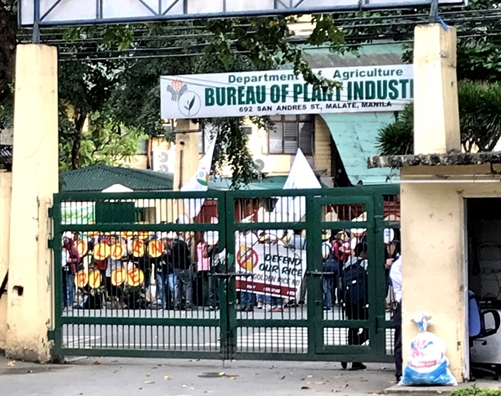The Filipinos are First!
|
|
The Philippines is the first Asian country to approve Golden Rice for Direct Use.
|
Adrian Dubock, Peter Beyer and Ingo Potrykus
|
In a victory for science-based regulatory decision-making, the Government of the Philippines has, on 10th December 2019, authorised the direct use of GR2E Golden Rice in food, feed, and for processing. The regulatory data were submitted by the Philippine Rice Research Institute (PhilRice) and the International Rice Research Institute (IRRI) in the spring of 2017 and were scrutinized by several regulatory committees representing agriculture, environment, health, science and technology, and local governments. This decision is huge, representing the first food approval for Golden Rice in a country where rice is the staple and vitamin A deficiency a significant public health problem. Those involved in the authorisation are to be praised for their scientific integrity and courage in the face of stiff activist-opposition.
In taking their decision, the Philippine Government has joined Australia, Canada, New Zealand, and the USA in affirming that Golden Rice is perfectly safe.
Unlike the industrialised countries, the Philippines is a country where rice is so important, that Pinoys (the Filipino people) do not consider any food to be a meal unless it is accompanied by rice. In 2018, per capita white rice consumption in the Philippines was 115 kg - or 315 g daily (454 g = 1 lb), or more than 15-fold higher than in the USA.
Since the 1940s the Philippine Government, at all levels, has pursued policies to deliver better health for its citizens. Nevertheless, the Philippines is a country where vitamin A deficiency (VAD) - globally, the leading cause of child mortality, and irreversible blindness - remains a significant public health problem.
The World Health Organization lists Philippine mothers as being moderately vitamin A deficient, and children less than 5 years old as being severely vitamin A deficient. This is despite, as reported in 2014, 85 percent of children consuming a vitamin-A rich food in the past day, and 76 percent of children receiving a vitamin A supplement in the past 6 monthsi. Vitamin A capsule (VAC) distribution in the Philippines has been in place since the early 1990s. Initially, the use of VACs was highly controversial. Globally, over the past 20 years, about 10 billion VACs have been distributed to preschool children at a cost of about US$10 billion. In the Philippines increasing standards of living, and the use of VACs, reduced VAD incidence among preschool children from 40 percent in 2003 to 15 percent in 2008. By 2013, however, VAD incidence had increased again to 20 percent of preschool children, and 28 percent of children between 6 and 12 months oldii.
A universal source of vitamin A will reduce child mortality by 23 - 34 percent, and up to 50 percent in cases of measles. It is expected that adoption of Golden Rice - the golden colour beta carotene is a source of vitamin A - into the regular diet will continue to reduce the incidence of VAD, and very sustainably: there is no extra cost for the additional nutrition, and no limitations on what small farmers can do with the seed. In the last month, a New Scientist article about Golden Rice commented: "What shocks me is that some activists continue to misrepresent the truth about the rice. The cynic in me expects profit-driven multinationals to behave unethically, but I want to think that those voluntarily campaigning on issues they care about have higher standards." iii
As recently as mid-November 2019, a demonstration against Golden Rice was mounted outside the Bureau of Plant Industry in Manila:

Consistent with its commitment to public health, the Philippines authorities have ignored the misrepresentations and hyperbole around Golden Rice. Instead they used their regulatory system and internationally accepted risk assessment principles (and their experience in assessing the safety of gmo cropsiv which are widely used in the Philippines) to carefully, and impartially, consider the data submitted by PhilRice and IRRI.
Children and women are dying and going blind as a result of vitamin A deficiency, despite existing interventions, and Golden Rice can assist. Even partial substitution of white rice consumption by Golden Rice - all grown in the Philippines by Philippine farmers - will combat VAD, and with no possibility of overdosingv.
Before Golden Rice can be adopted by Filipino farmers, it will have to be approved for wide-scale propagation and receive varietal registration. Field trials of Golden Rice, already completed in both the Philippines and in Bangladesh, - which share the same agro-ecosystem - have shown no cause for concern, so the outlook is very positive. Only following adoption of the publicly owned Golden Rice varieties developed by PhilRice into daily consumption, can Golden Rice start to save sight and livesvi, as it was designed to do almost a quarter of a century agovii.
i Chaparro, C.; Oot, L.; and Sethuraman, K. 2014. Philippines Nutrition Profile. Washington, DC: FHI 360/FANTA.
ii FNRI 2016
iii https://www.newscientist.com/article/mg24432572-800-approval-of-golden-rice-could-finally-end-vitamin-a-deficiency-deaths/
iv http://biotech.da.gov.ph/Decision_docs_jdc_direct.php
v http://mts.intechopen.com/articles/show/title/golden-rice-to-combat-vitamin-a-deficiency-for-public-health
vi http://mts.intechopen.com/articles/show/title/golden-rice-to-combat-vitamin-a-deficiency-for-public-health
vii http://www.annualreviews.org/doi/abs/10.1146/annurev-arplant-043014-114734
|
|
|






